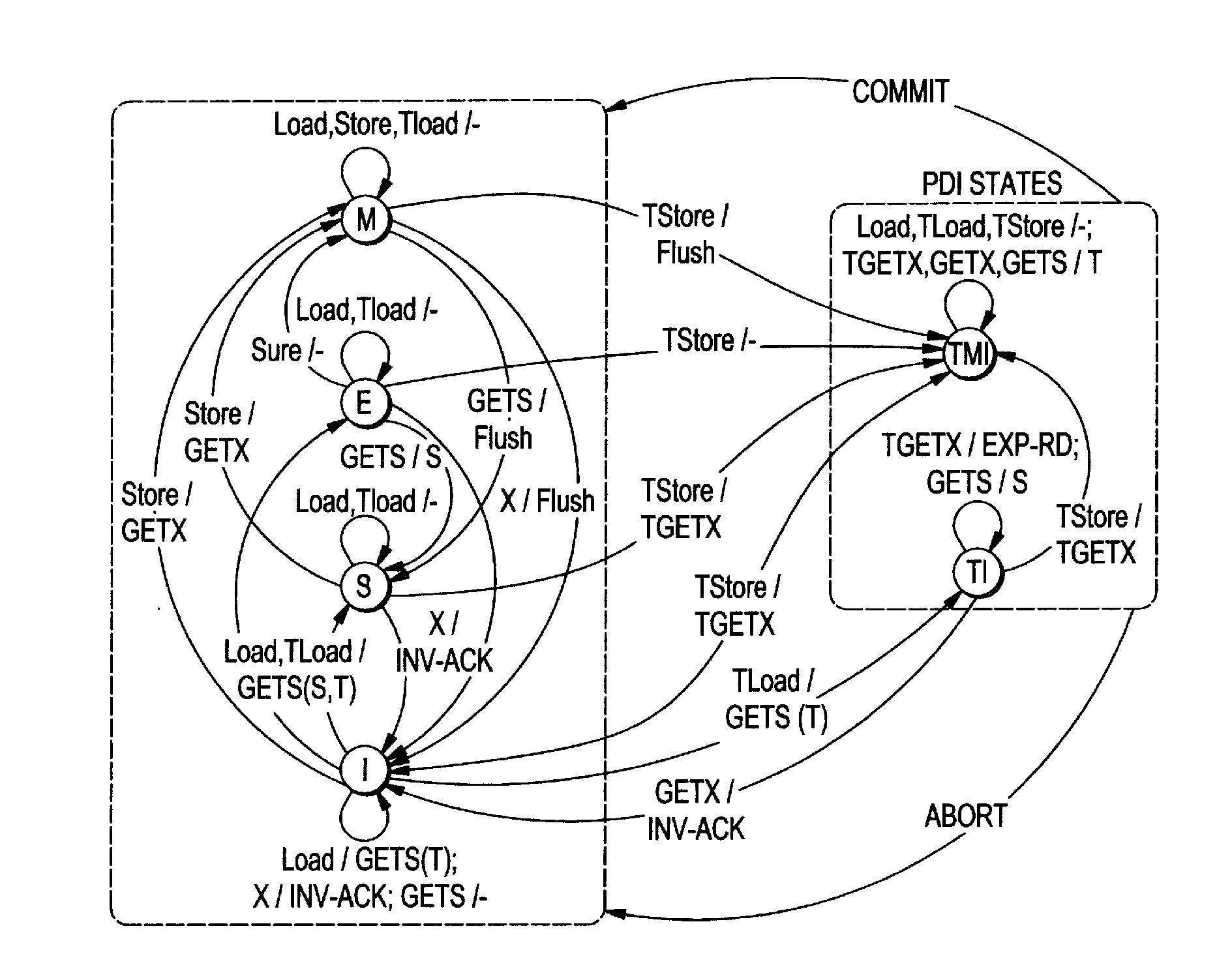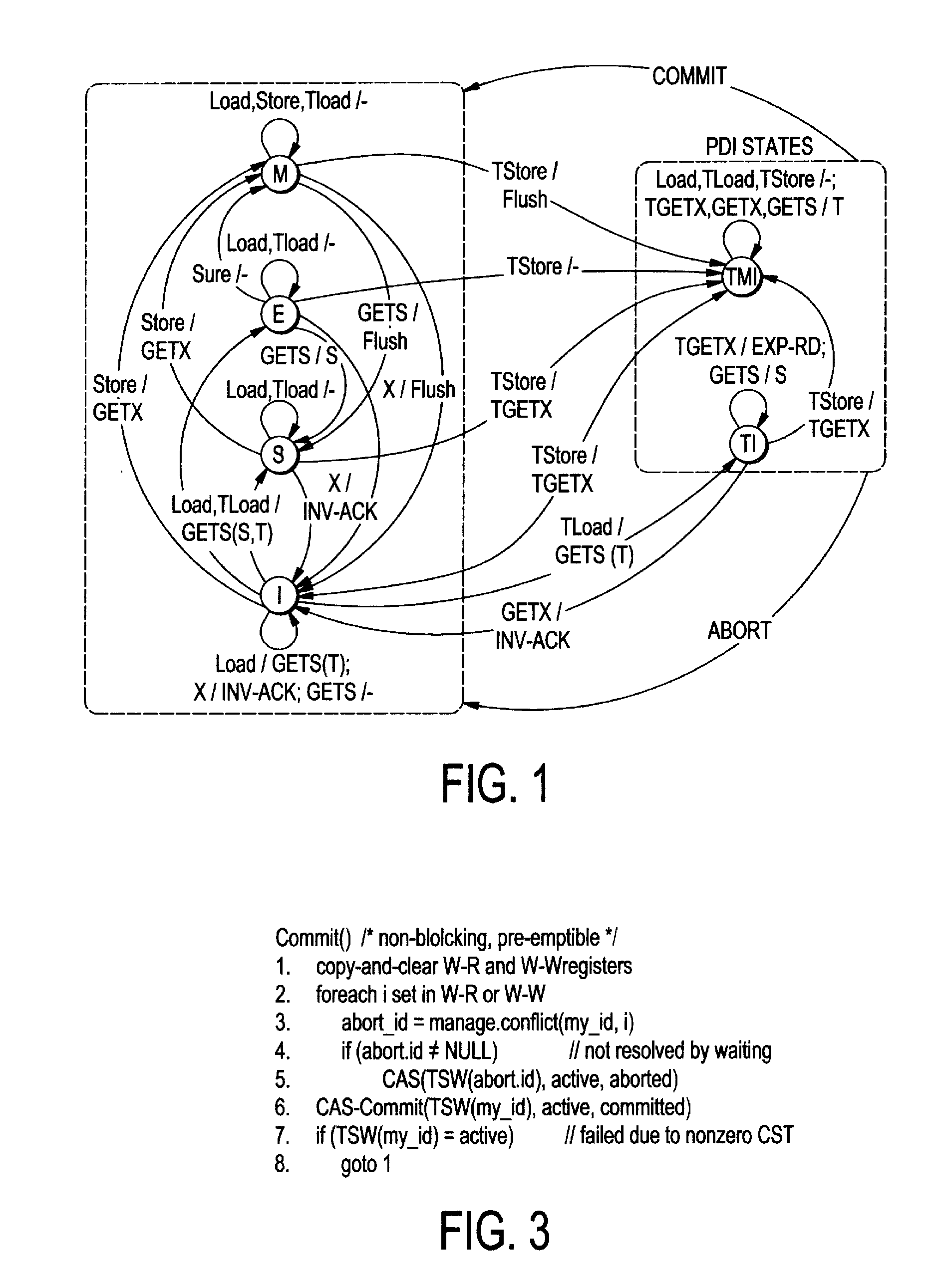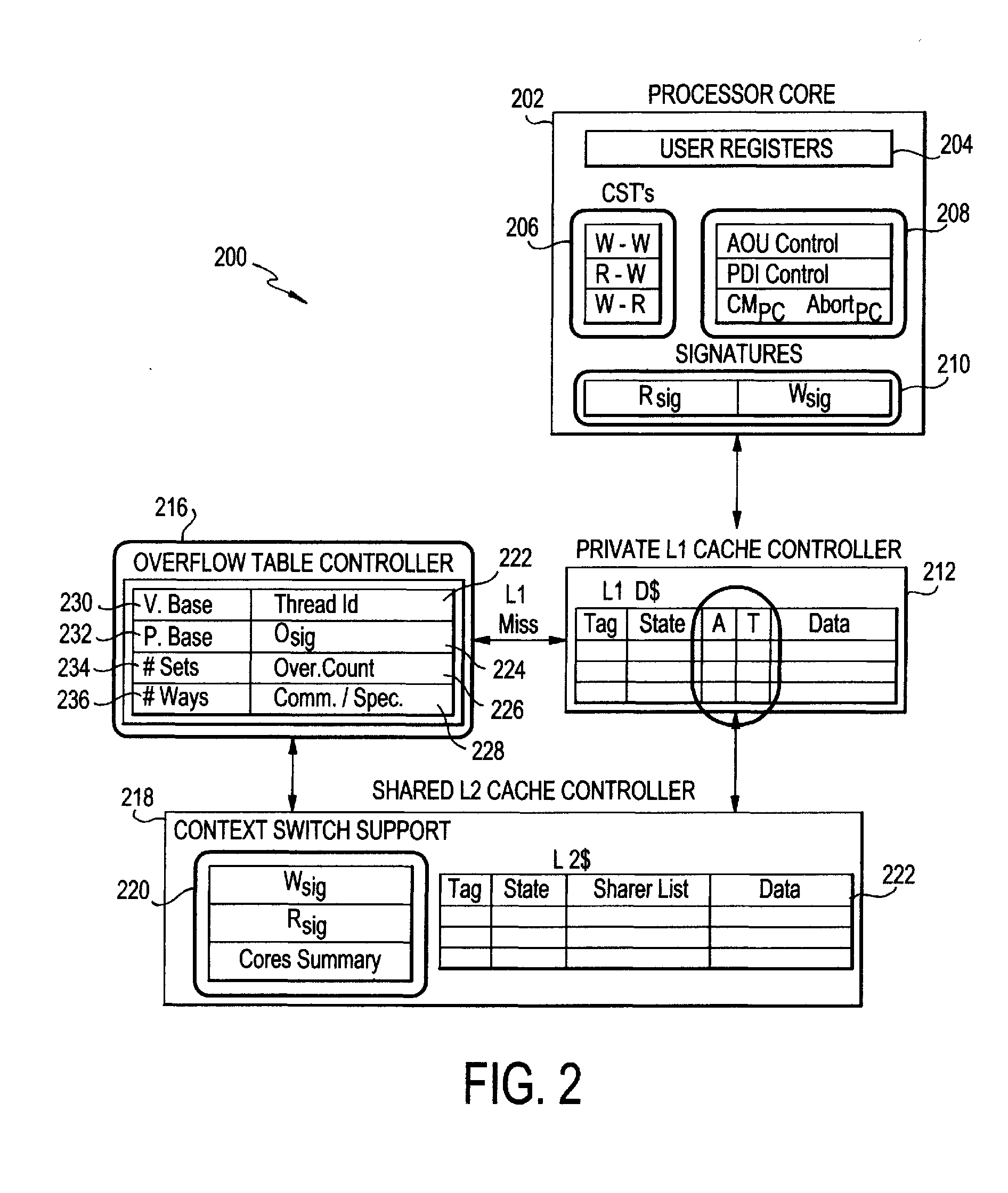Mechanism to support flexible decoupled transactional memory
a transactional memory and transactional memory technology, applied in the field of computer memory, can solve the problems of limiting the application of tm applications, affecting the performance of tm applications, so as to maximize the overall system utilization, maximize concurrency, and encourage forward progress of tm applications.
- Summary
- Abstract
- Description
- Claims
- Application Information
AI Technical Summary
Benefits of technology
Problems solved by technology
Method used
Image
Examples
Embodiment Construction
[0066]A preferred embodiment of the present invention will be set forth in detail with reference to the drawings, in which like reference numerals refer to like elements or steps throughout.
[0067]FlexTM provides hardware mechanisms for conflict detection, conflict management, and versioning. We first describe these separately, then discuss how they work together to enable flexible TM.
[0068]Access tracking, including read-set and write-set signatures, will now be described. Bulk and LogTM-SE use Bloom filter signatures to summarize the read and write sets of transactions in a concise but conservative fashion (i.e., false positives but no false negatives). Signatures decouple conflict detection from critical L1 tag arrays and enable remote requests to test for conflicts using local processor state, without walking in-memory structures. As in these systems, every FlexTM processor maintains a read signature (Rsig) and a write signature (Wsig) for the current transaction. The signatures ...
PUM
 Login to View More
Login to View More Abstract
Description
Claims
Application Information
 Login to View More
Login to View More - R&D
- Intellectual Property
- Life Sciences
- Materials
- Tech Scout
- Unparalleled Data Quality
- Higher Quality Content
- 60% Fewer Hallucinations
Browse by: Latest US Patents, China's latest patents, Technical Efficacy Thesaurus, Application Domain, Technology Topic, Popular Technical Reports.
© 2025 PatSnap. All rights reserved.Legal|Privacy policy|Modern Slavery Act Transparency Statement|Sitemap|About US| Contact US: help@patsnap.com



